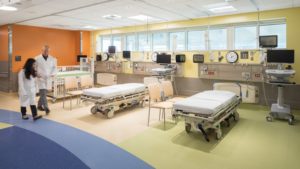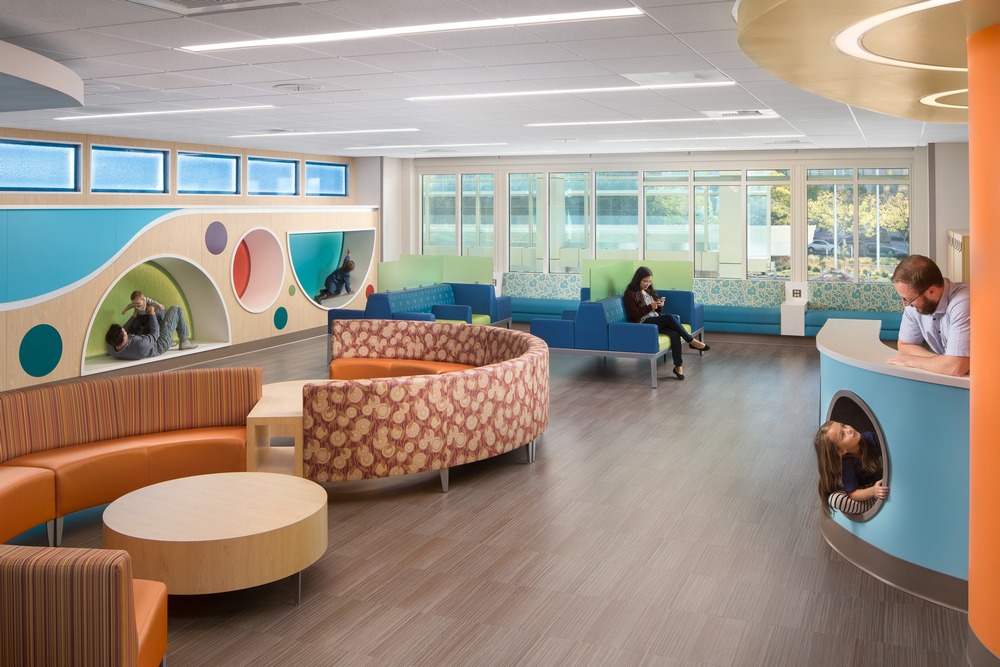A new children’s surgery center recently opened on the UC Davis Medical Center campus in Sacramento, California. Designed by HGA and built by Rudolph and Sletten, the 20,000-square-foot center is one of many next steps in a multi-year, multi-phase seismic compliance masterplan for the hospital.
UC Davis Children’s Hospital is the Sacramento region’s only nationally ranked, comprehensive hospital that provides care from infancy through young adulthood and for all facets including primary care, subspecialties and critical care.
 The children’s surgery center was first located in the North-South Wing of the hospital, which was built in the 1950s. However, as the hospital continued to grow and embarked on a multi-year seismic compliance masterplan, that wing is being vacated for future demolition. The CSC was relocated to designated expansion space in the Surgery and Emergency Services Pavilion.
The children’s surgery center was first located in the North-South Wing of the hospital, which was built in the 1950s. However, as the hospital continued to grow and embarked on a multi-year seismic compliance masterplan, that wing is being vacated for future demolition. The CSC was relocated to designated expansion space in the Surgery and Emergency Services Pavilion.
Located on the second and third floor of the SESP, the children’s surgery center’s pediatric facility was designed to meet seismic safety code and to maximize value without sacrificing quality. Patients and their families check in and use the waiting room on the second floor that also houses the staff breakroom, administration offices and other support services. Patients are then escorted to the prep/recovery bays on the third floor, which also house six new operating rooms – four general operating rooms, one cardiovascular operating room and one complex operating room to be used for specialty cases, such as conjoined twin separations. All building support systems serving the surgical spaces were upgraded with the project.
Serving children from infants to 17-year-old young adults, design considerations needed to cater to diverse patient needs. HGA’s goals included creating an environment that was both practical and child-friendly in an effort to provide a sense of comfort, stability and safety to the facility’s young patients and their families during their stay. For instance, the brightly colored waiting room features a play area to make the transition process easier for younger patients.
In addition, the OR environments were designed to assist in controlling the pediatric patient’s body temperature. Infants and neonates are vulnerable to both hypothermia and hyperthermia during surgery, therefore a need for rapid heating and cooling of the ORs. Computational fluid dynamics computer modeling was utilized to optimize the size and location of ceiling diffuser arrays and low-wall return grilles and to determine actual ventilation rates necessary for thermal management and to achieve superior airflow around the operating tables.
Particular attention to detail was given to the design of staff meeting areas. Because UC Davis Medical Center is a teaching hospital, advanced technological capabilities included implementing live video feeds from operating rooms that can be watched from the adjacent collaboration rooms.





